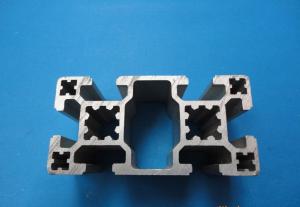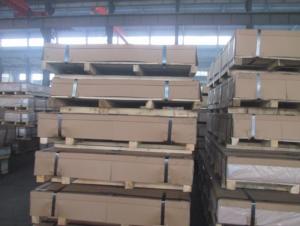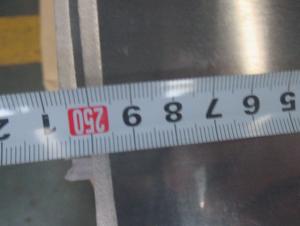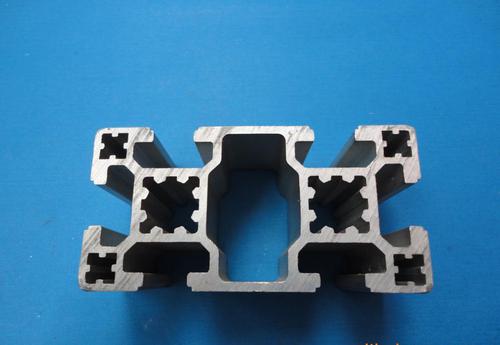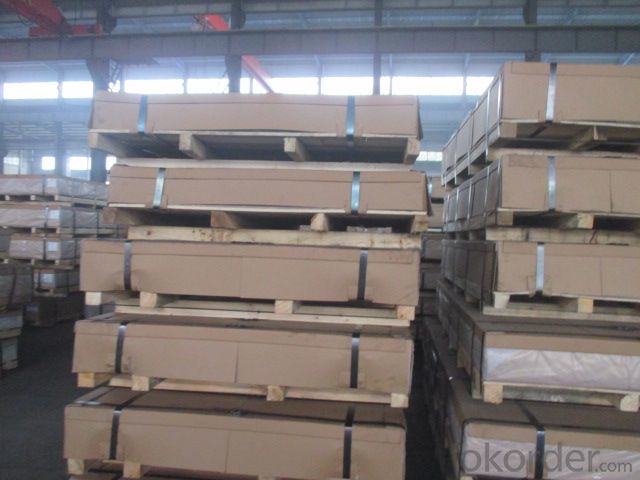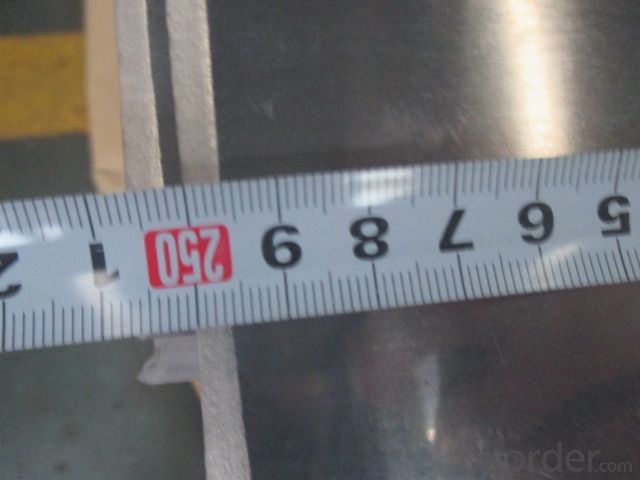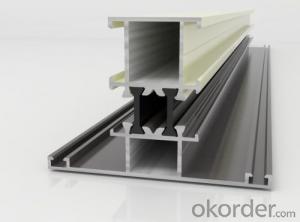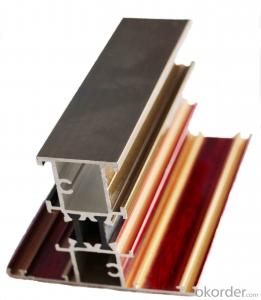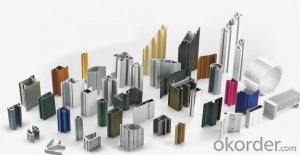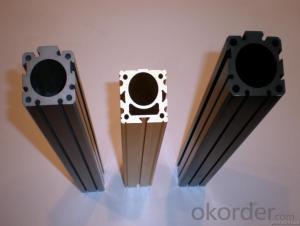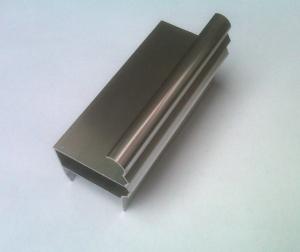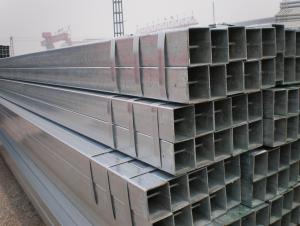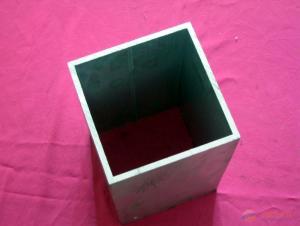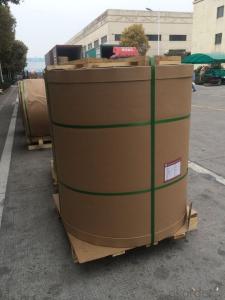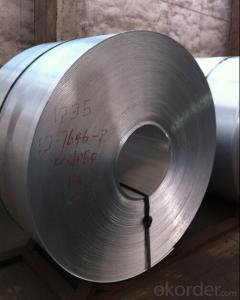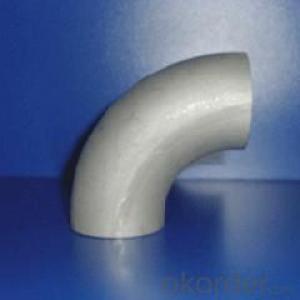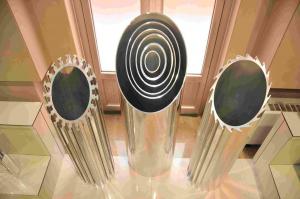Modular Aluminum Profiles:Aluminium Stocks Warehouse Price in Cheaper Price
- Loading Port:
- Shanghai
- Payment Terms:
- TT or LC
- Min Order Qty:
- 4 m.t.
- Supply Capability:
- 5000 m.t./month
OKorder Service Pledge
OKorder Financial Service
You Might Also Like
1.Structure of Product Description
Cold rolled aluminum sheet is used in the field of construction field and dration field, etc.
There are many different grades, such as: 1000 series, 2000 series, 3000 series, 5052,5754,5083,6061,6063,8011, etc.
The temper is include H14, H22, H24, H44,O,F,,H114,etc.
2. Main features of the product
a.Competitive price
b.Frist-Class Service.
c. Shortest service.
3. Image.
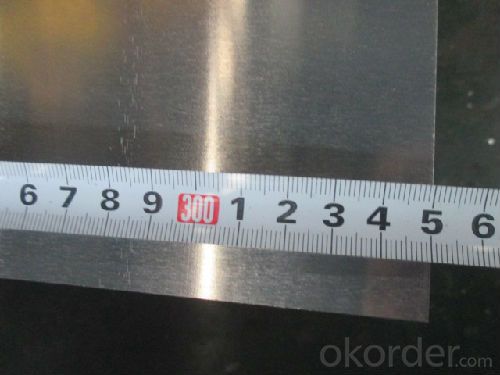
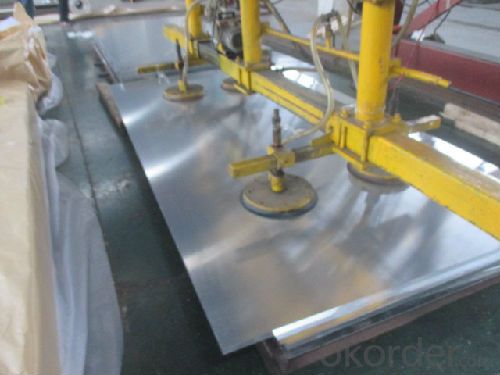
4. Product detailed sizes:
1000mm*2000mm, 1219mm*2438mm,1220mm*2440mm, *2500mm,1500mm*3000mm, etc.
5. FAQ:
What is the quality standard?
---Usually our standard is GB3880-2006 or others.
What is the width range?
---It is from 1000mm to 2500mm, etc.
---Normally it is around 9000 tons totally.
Where is your client from?
---Normally it is from Japan, USA, ENGLISH, ETC.
What is your mainly products?
---Normally they are aluminum sheet, checkd sheet, mirror finish aluminium sheet, aluminum casting coil, etc.
- Q: How do aluminum profiles contribute to lightweight construction?
- Due to their inherent properties and versatile applications, aluminum profiles play a crucial role in the field of lightweight construction. Firstly, aluminum, being a lightweight material, has a density that is roughly one-third of that of steel. This implies that using aluminum profiles instead of heavier materials like steel or concrete aids in minimizing the overall weight of the structure or product. The lightweight nature of aluminum profiles presents several advantages in the construction industry. One notable benefit is the ease of handling and installation, which reduces the reliance on heavy machinery and labor-intensive processes. Consequently, this not only enhances the efficiency of construction projects but also leads to cost reductions. Furthermore, the utilization of aluminum profiles in lightweight construction contributes to energy efficiency. Aluminum is an excellent conductor of heat and electricity, allowing for effective heat dissipation and decreased energy consumption in buildings. This property is particularly advantageous in the construction of energy-efficient buildings, aligning with sustainability objectives. Another aspect in which aluminum profiles contribute to lightweight construction is their exceptional strength-to-weight ratio. In spite of their lightweight nature, aluminum profiles possess high tensile strength, making them highly durable and capable of withstanding various loads and stresses. This characteristic enables the creation of robust and stable structures while minimizing the use of materials. Moreover, aluminum profiles offer design flexibility and versatility. They can be extruded into various shapes and sizes, empowering architects and designers to conceive intricate and innovative structures. The ability to customize profiles according to specific project requirements enhances the architectural possibilities in lightweight construction. Additionally, aluminum profiles exhibit corrosion resistance, significantly extending their lifespan and reducing maintenance costs. This makes them suitable for applications in diverse climates and environments, including coastal regions where saltwater corrosion is prevalent. In conclusion, aluminum profiles contribute to lightweight construction by reducing overall weight, enhancing energy efficiency, providing strength and durability, offering design flexibility, and ensuring corrosion resistance. These factors establish aluminum profiles as a preferred choice in a wide array of construction projects, ranging from residential buildings to large-scale infrastructure.
- Q: How do aluminum profiles compare to plastic profiles?
- Aluminum profiles and plastic profiles are commonly used in various industries for different applications. When comparing the two, there are several factors to consider. Strength and Durability: Aluminum profiles are generally stronger and more durable than plastic profiles. Aluminum has high tensile strength, allowing it to withstand heavy loads and resist deformation. Plastic profiles, on the other hand, are more prone to cracking or breaking under excessive stress. Weight: Aluminum profiles are heavier than plastic profiles. This can be an advantage or disadvantage depending on the specific application. Aluminum's weight can provide stability and strength, while plastic's lightweight nature can make it easier to handle and install. Corrosion Resistance: Aluminum profiles have excellent corrosion resistance properties. They can withstand exposure to various environmental conditions, making them suitable for outdoor applications. Plastic profiles, however, are not as resistant to certain chemicals or UV radiation, which can cause degradation over time. Flexibility and Design: Plastic profiles offer more design flexibility compared to aluminum profiles. Plastic can be easily molded into complex shapes and customized according to specific requirements. Aluminum, although less flexible, can still be shaped or extruded into different profiles with some limitations. Thermal and Electrical Conductivity: Aluminum profiles have superior thermal conductivity, allowing them to dissipate heat more effectively. They are often used in applications where heat dissipation is critical, such as electronics or heat sinks. Plastic profiles have lower thermal conductivity and are less suitable for such applications. Cost: Plastic profiles are generally more cost-effective than aluminum profiles. The manufacturing process for plastic profiles is simpler and cheaper, resulting in lower production costs. Aluminum profiles, on the other hand, require more advanced manufacturing techniques and additional finishing processes, making them relatively more expensive. In conclusion, the choice between aluminum and plastic profiles depends on the specific requirements of the application. Aluminum profiles offer superior strength, durability, and corrosion resistance, making them suitable for heavy-duty or outdoor applications. Plastic profiles, on the other hand, provide more design flexibility and cost-effectiveness, making them ideal for lightweight or customized applications.
- Q: How do aluminum profiles perform in terms of energy efficiency?
- Aluminum profiles have excellent energy efficiency performance due to their inherent properties. They are lightweight, durable, and can be easily shaped to optimize thermal insulation. Additionally, aluminum profiles can accommodate double or triple glazing, which further enhances their energy efficiency by minimizing heat transfer and reducing energy consumption for heating or cooling.
- Q: What are the different types of hinges used with aluminum profiles?
- There are several types of hinges that can be used with aluminum profiles. Some common types include: 1. Butt hinges: Butt hinges are the most basic type of hinge used with aluminum profiles. They consist of two plates that are connected by a pin, allowing the door or panel to swing open and closed. 2. Piano hinges: Also known as continuous hinges, piano hinges are long, narrow hinges that run the entire length of the door or panel. They are often used for large or heavy doors because they provide extra support and stability. 3. Concealed hinges: As the name suggests, concealed hinges are not visible when the door or panel is closed. They are typically used for cabinet doors or other applications where a clean, seamless appearance is desired. 4. Pivot hinges: Pivot hinges are designed to allow a door or panel to pivot on a single point. They are often used for doors that need to swing in both directions or for doors that are taller than they are wide. 5. European hinges: European hinges, also known as cup hinges or hidden hinges, are commonly used in cabinet doors. They are adjustable and allow the door to be opened and closed smoothly. 6. Self-closing hinges: Self-closing hinges are equipped with a spring mechanism that automatically closes the door or panel after it has been opened. They are often used in high-traffic areas or where it is important to ensure that doors are properly closed. These are just a few examples of the different types of hinges that can be used with aluminum profiles. The choice of hinge will depend on factors such as the application, size and weight of the door or panel, desired aesthetics, and functionality requirements.
- Q: Are aluminum profiles suitable for use in the electronics industry?
- The electronics industry finds aluminum profiles to be a suitable option. Aluminum, being lightweight, durable, and resistant to corrosion, becomes an excellent choice for different electronic applications. Its exceptional thermal conductivity facilitates efficient dissipation of heat in electronic devices, which is crucial to avoid overheating and ensure optimal performance. Moreover, aluminum profiles can be easily customized and fabricated to fulfill specific design requirements, making them adaptable for various electronic components and enclosures. They also possess electromagnetic shielding properties, safeguarding sensitive electronic circuits from interference. All in all, aluminum profiles provide numerous advantages for the electronics industry, making them a popular and appropriate option for electronic devices and equipment.
- Q: This question asks for a list of various roofing systems that incorporate the use of aluminum profiles.
- <p>Aluminum profiles are used in several types of roofing systems for their durability, lightweight, and corrosion resistance. Some common types include: 1. Standing Seam Roofing: Known for its sleek, clean appearance and watertight properties. 2. Aluminum Shingle Roofing: Mimics the look of traditional shingles but with the benefits of aluminum. 3. Metal Tile Roofing: Offers the aesthetic of clay or slate tiles with the strength of aluminum. 4. Aluminum Panel Roofing: Consists of large panels that cover a broad area quickly and efficiently. 5. Aluminum Shake Roofing: Provides a rustic look similar to wooden shakes but with the longevity of aluminum. Each system has its own advantages and is chosen based on factors like design, cost, and environmental conditions.</p>
- Q: How do aluminum profiles contribute to daylighting strategies?
- Aluminum profiles play a significant role in daylighting strategies by facilitating the efficient use of natural light in buildings. These profiles are used to create windows, skylights, and curtain wall systems, which allow for the maximum entry of sunlight into the interior spaces. One of the primary advantages of using aluminum profiles in daylighting strategies is their ability to support large glass panes. Aluminum is lightweight and structurally strong, enabling the creation of expansive glazing systems that maximize the transmission of natural light. These profiles can be designed to have slim sightlines, providing unobstructed views and allowing more sunlight to enter the building. Moreover, aluminum profiles can be thermally broken, meaning they have a layer of insulation between the interior and exterior aluminum sections. This thermal break prevents the transfer of heat and cold, improving the energy efficiency of the building. By minimizing thermal bridging, aluminum profiles contribute to reducing the loss of heat or cool air, resulting in lower energy consumption for heating and cooling systems. Additionally, aluminum profiles can be finished with various coatings that enhance their daylighting performance. For instance, reflective coatings can be applied to the profiles to redirect sunlight deeper into the interior, increasing the overall brightness of the space. Such coatings can also help reduce glare and control the intensity of sunlight, creating a more comfortable and visually pleasing environment. Furthermore, aluminum profiles offer flexibility in terms of design and customization. They can be shaped into different geometries and sizes, enabling architects to create innovative and unique daylighting solutions. For example, the profiles can be curved, angled, or combined with other materials to achieve specific aesthetic and functional requirements. In summary, aluminum profiles contribute to daylighting strategies by allowing for the efficient use of natural light in buildings. Through their structural strength, thermal performance, and customization possibilities, these profiles enable the creation of large glazing systems that maximize the entry of sunlight while maintaining energy efficiency and visual comfort.
- Q: How do aluminum profiles perform in blast-resistant structures?
- Due to their exceptional performance characteristics, aluminum profiles find wide application in blast-resistant structures. These profiles possess several advantages that render them suitable for such purposes. To begin with, aluminum profiles offer an excellent strength-to-weight ratio, enabling them to provide high structural integrity while maintaining a relatively low overall weight. This plays a crucial role in blast-resistant structures by minimizing explosion impact and potential damage. Additionally, aluminum profiles exhibit remarkable corrosion resistance, ensuring their durability in harsh environments. This becomes particularly significant in blast-resistant structures, where exposure to intense pressure waves, debris, and extreme temperatures may occur during an explosion. Moreover, aluminum profiles possess excellent energy absorption capabilities, effectively dissipating and absorbing blast-generated energy. Consequently, this reduces the impact on the structure and enhances its overall blast resistance. Such a feature plays a vital role in safeguarding occupants and preventing structural failure. Furthermore, aluminum profiles offer exceptional design flexibility, allowing architects and engineers to construct complex and innovative structures. This versatility empowers the creation of blast-resistant structures tailored to specific requirements and design constraints. In conclusion, aluminum profiles excel in blast-resistant structures due to their high strength-to-weight ratio, corrosion resistance, energy absorption capabilities, and design flexibility. These qualities establish them as the preferred choice for architects and engineers when designing structures capable of withstanding the forces generated by an explosion.
- Q: Can aluminum profiles be used in the construction of modular office spaces?
- Certainly, modular office spaces can undoubtedly utilize aluminum profiles in their construction. With their lightweight nature, durability, and exceptional structural integrity, aluminum profiles prove to be an excellent option for modular construction projects. They can be effortlessly fabricated and assembled to form a variety of components, including walls, partitions, doors, windows, and framing systems for modular office spaces. Furthermore, aluminum profiles offer immense design flexibility, enabling customization and adaptation to diverse office layouts and requirements. Moreover, they possess high resistance to corrosion, which proves particularly advantageous in office environments susceptible to moisture and humidity. In essence, aluminum profiles offer a multitude of benefits in terms of strength, versatility, and aesthetics, rendering them a favored choice for construction in modular office spaces.
- Q: Are aluminum profiles capable of being tailored to fulfill unique design needs or standards?
- <p>Yes, aluminum profiles can be customized to meet specific design requirements or specifications. This customization can include varying the dimensions, finishes, and shapes to fit the intended application. Manufacturers can modify the extrusion process to create profiles with specific tolerances, surface treatments, and mechanical properties. This flexibility makes aluminum profiles suitable for a wide range of industries, including construction, automotive, and aerospace.</p>
Send your message to us
Modular Aluminum Profiles:Aluminium Stocks Warehouse Price in Cheaper Price
- Loading Port:
- Shanghai
- Payment Terms:
- TT or LC
- Min Order Qty:
- 4 m.t.
- Supply Capability:
- 5000 m.t./month
OKorder Service Pledge
OKorder Financial Service
Similar products
Hot products
Hot Searches
Related keywords
